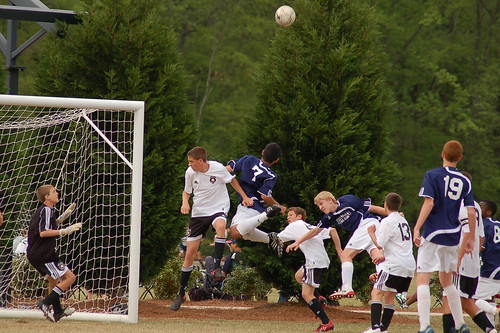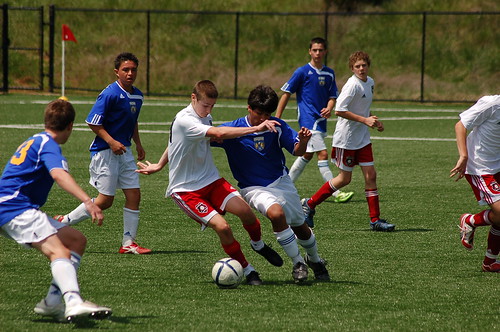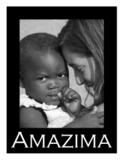Ok, I shoot with a Nikon D50, older model that is no longer made. The one downside to the D-50 is that it only has 6 megapixels…since you definitely need to crop sports photos, more megapixels are better. I always shoot with my Nikkor 70-300 mm lens, I believe it’s the ED-series.
For all other pictures, I always have my Quantaray 18-200mm lens available. Definitely not the quality of a Nikkor lens, but I still love it and it’s much more affordable.
When I’m shooting sports, I always shoot on Shutter Priority… that means I can set my shutter speed and the camera does the rest. Soccer moves way too fast for me to try and shoot manual. On really bright, sunny days, I also use my Circular Polarizer to get those pretty blue skies.
I like my shutter speed to be at 1/1000 of a second or higher, but you need really bright sunlight for that. I’ve been known to shoot at a shutter speed as low as 1/250, and sometimes that gives you a cool effect, like the blur of the ball or foot, but it doesn’t give you as crisp of a photo because it’s not fast enough to stop the action completely. Remember too, when you’re using a long telephoto lens, it picks up camera shake and that can make the image blurry.

(This photo shows you an example of a slower shutter speed...1/640 at f/8... See how the player is sharp but the ball was moving so fast that even 1/640 didn't freeze it, it's just a little blurred. I tend to like that effect because it gives a sense of movement.)
You can also play with your ISO (essentially your film speed, if you had film)… I prefer 200, but I’ll go all the way up to 1600 to capture a late afternoon game, the photos are just more grainy.
One thing to watch is when your shutter speed is set to high, you start compromising your aperture (depth of field) and since you’re shooting from a distance, you want a decent aperture…at least an f/5.6, or f/8 is even better.
As for focus and metering, I use center weighted for both because my main concern is the subject. The one thing you have to be really aware of when using center weighted focusing is that you are centered on the subject… I can’t tell you how many great shots I’ve had be out of focus because the center was just a little off and something in the background was more in focus than the subject.
As for capturing the moment… you need to learn to pan the camera. That means that you anticipate where the ball is headed and start shooting, moving your camera with the player. I set my camera on Continuous Focus so it’s constantly focusing as I do this.

(This photo gives you an idea of what's possible when you start shooting with the beginning of the action... This was a corner kick, I focused on the players all grouped around the goal and started shooting when the kick was made... It is cropped just a tad.)
In a typical soccer game, I will shoot 200-300 photos and keep maybe 50… I literally shoot a play from start to finish, it’s really fun because you can actually watch a play unfold in photos, kind of the old flip book idea… I keep the really good series, but I believe in really editing my photos and keeping the best of the best.
To really capture good photos, you pretty much have to keep the camera to your face... It will take practice, but since you’re probably shooting digital, go for it…take a thousand pictures if you have to. And don’t get frustrated, it just takes some time… I even have to learn how each new team plays so I can better anticipate what’s going to happen.
As I said in the beginning, you will need to crop your photos because the best action shots are the ones that fill the frame (picture)… So, it’s better to shoot at a little wider angle since the action moves so fast, but I do my best to capture what I want in the camera, because the more you crop, the more resolution you lose. The next two photos are a before and after of one that I cropped...Notice how in the second one the players really fill the photo...
I hope this helps a little… Good luck and happy shooting!











2 comments:
Thank you for reposting this! I found it very helpful and look forward to trying to capture some soccer moments this weekend.
Always love your pics!
Post a Comment